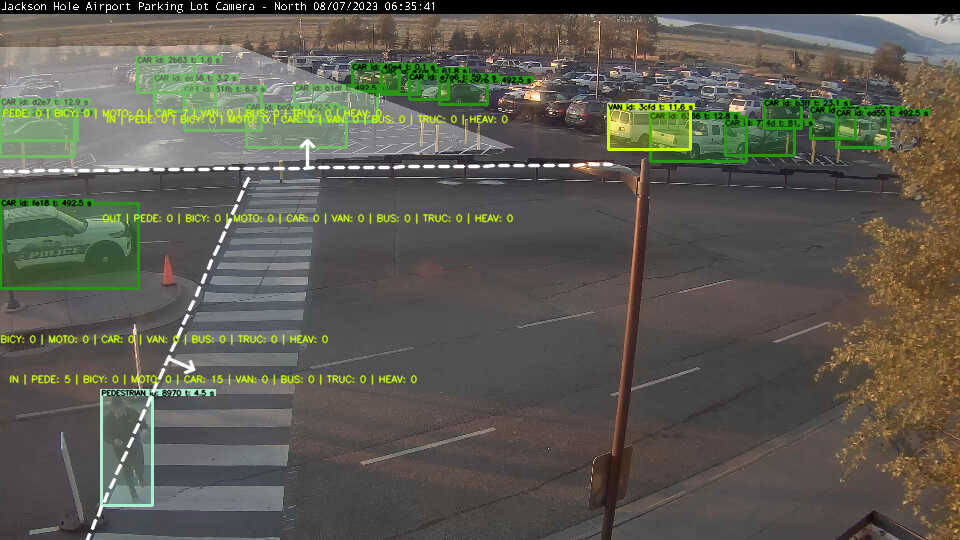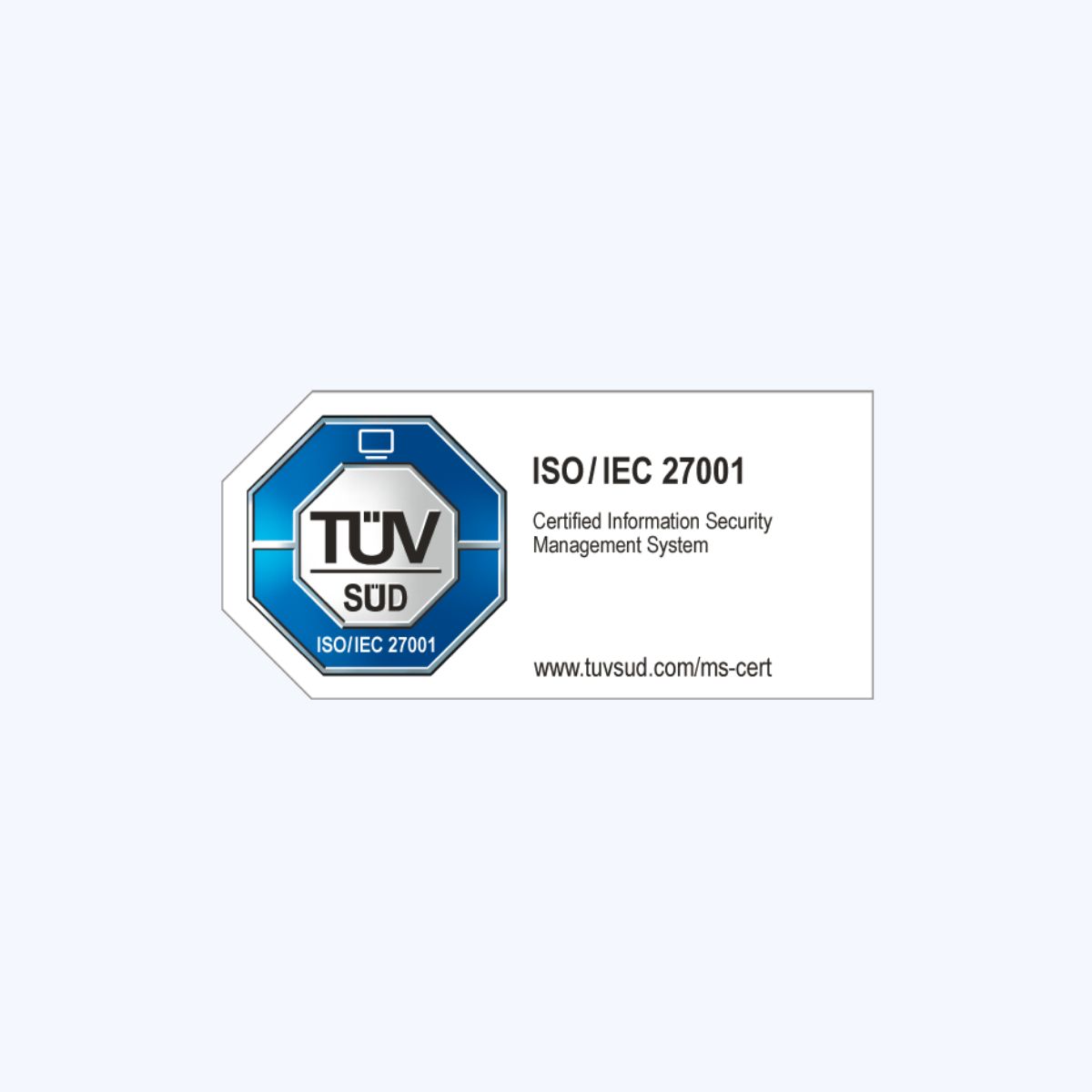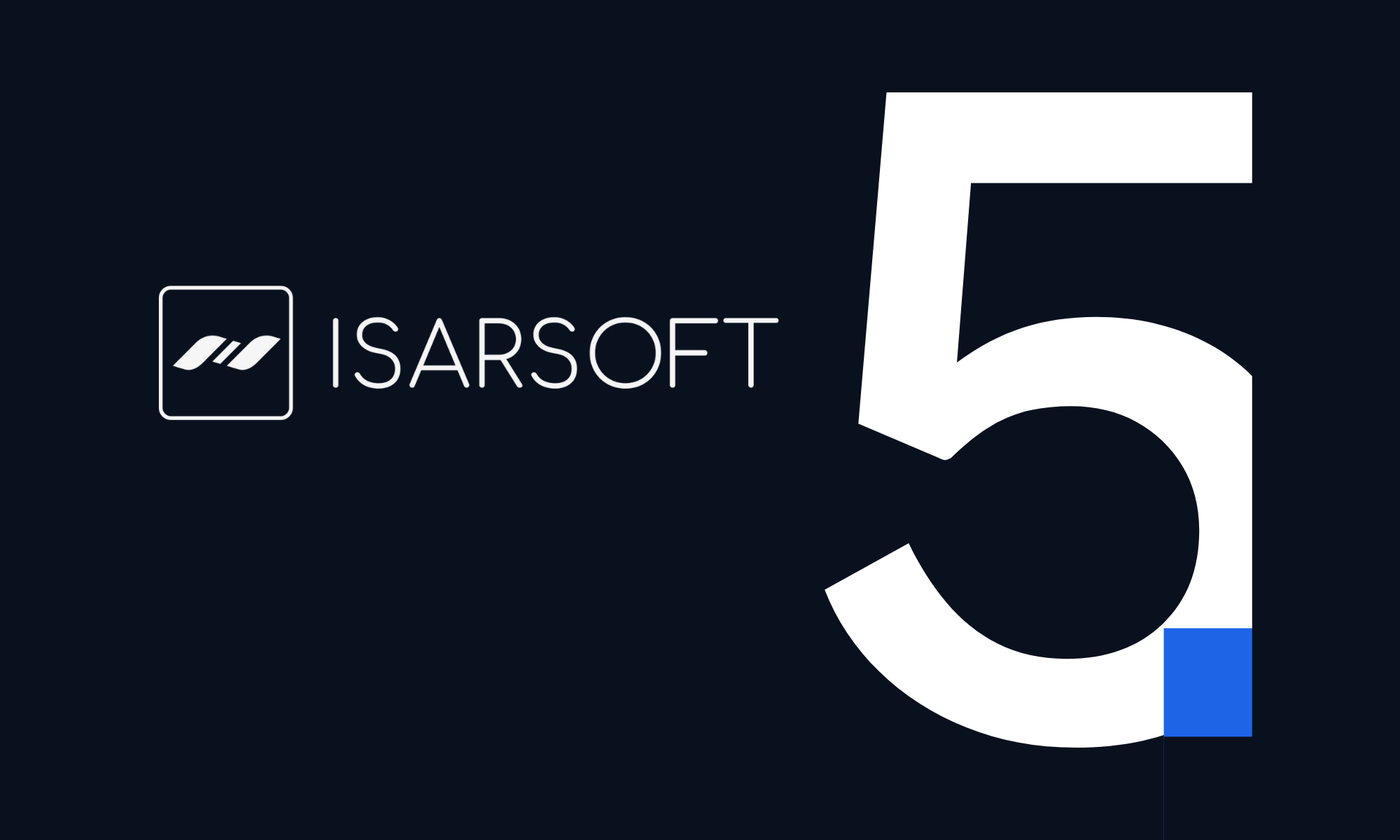AI in Traffic Management
Explore how AI in traffic management is transforming urban mobility. Learn how intelligent traffic management systems use artificial intelligence to optimize traffic flow, reduce congestion, and enhance commute efficiency.
Published
December 12, 2025

Artificial Intelligence (AI) offers vast potential in revolutionizing traffic management systems, helping to significantly reduce congestion.
In this article, we explore the many ways in which AI aids traffic management, its overall impact, benefits and challenges, and what to look forward to in the future. We give answers to these questions:
- What are the use cases for AI in traffic management?
- What is the technology behind traffic prediction, traffic light optimization, route and navigation optimization?
- How is AI and video analytics applied in real-world traffic?
- Which benefits does AI powered traffic management bring?
What means AI in Traffic Management?
Traffic Management refers to the organization, guidance, and control of a traffic system consisting of stationary and moving traffic, traffic lights and physical infrastructure, pedestrians and cyclists.
Traffic Management has undergone rapid evolution since the introduction of smart tech such as AI-based video analytics, and given way to Active Traffic Management (ATM). ATM allows traffic to be managed in a dynamic way, i.e, according to current or expected traffic conditions.
.avif)
The importance of this lies in enhanced safety and efficiency of traffic systems - a lowered rate of emissions, conservation of resources, quick identification of safety-critical events to minimize injuries and accidents, and reinforcement of traffic rules.
Role of AI in improving Traffic Efficiency
The use of AI in traffic management is relatively recent, and is based on a focus on the collection and consequent analysis of real-time data. AI technologies like machine learning, computer vision and data analytics offer traffic planners access to valuable data that can be used to analyze, detect, and predict patterns in traffic. The goal is to establish a traffic network where signals, public transport and traffic flow functions like clockwork.
AI also forms the backbone of modern Intelligent Transport Systems (ITS), where vehicles, infrastructure, and control centers share information in real time. Through Vehicle-to-Everything (V2X) communication including V2V, V2I, and V2P, traffic systems can exchange safety-critical data to improve awareness, optimize signal timing, and reduce congestion. Connected vehicles further enhance this ecosystem by transmitting speed, position, and braking data that help predict potential conflicts and support smoother, safer traffic flow.
What are the use cases for AI in Traffic Management?
In this section we will cover how cities profit from AI in traffic management in several use cases.
Traffic flow prediction
Understanding traffic before it happens is one of AI’s biggest advantages. By analyzing real-time and historical data, AI can predict where congestion will form and help cities act before delays build up.
Examples:
• A city expects heavy congestion near a stadium before a football match, so traffic lights are adjusted in advance.
• Morning rush-hour patterns show recurring bottlenecks, leading planners to redesign routes.
Incident detection and management
AI spots unusual road events within seconds, allowing traffic operators to respond immediately. This rapid detection prevents long delays and reduces secondary accidents.
Examples:
• Cameras identify a vehicle driving the wrong way on a highway and alert authorities instantly.
• A stopped truck on a major corridor is detected, and drivers are rerouted in real-time.
Real-world example for Video Analytics improving Traffic Management at Port of Algeciras
A strong example of AI-powered video analytics improving traffic management comes from the Port of Algeciras, one of Southern Europe’s busiest logistics hubs.
.png)
Dashboard of Isarsoft Perception for Port Algeciras
The Port of Algeciras faces complex traffic conditions with congestion at key access points and limited visibility across internal roads. By using Isarsoft’s video analytics on its existing camera network, the port gained real-time insight into vehicle movements and traffic patterns. This enabled faster responses to bottlenecks, improved flow through critical areas, and supported proactive traffic management without requiring new hardware. Read the full case study here.
The video below shows how the intelligent VIdeo Analytics software Isarsoft Perception can be used together with regular security cameras to obtain real time information about traffic flow and congestion in general. The insights can be used to optimize the traffic control to changing traffic patterns in cities as well as logistics areas like ports or airports.
Adaptive traffic signal control
Static traffic lights cannot react to real-world conditions. AI-powered signals adjust timing in real time, ensuring smoother traffic flow and shorter waits at intersections.
Examples:
• A sudden spike in vehicles on a main road leads to longer green phases for that direction.
• Late at night, signals shorten red phases to avoid unnecessary waiting.
Public Transport Optimization
AI analyzes how people actually move through a city and can draw conclusions about which bus stops are busiest, which times see spikes in demand, and where delays typically occur. Instead of relying on static schedules, the system continuously adjusts bus and train timetables and even redesigns routes when needed.
Examples:
• If a bus line is consistently overcrowded at 8:00 AM, AI can recommend adding an extra bus.
• If a route is under-used, it can be shortened or rerouted automatically.
Emergency Vehicle Prioritization
When an ambulance or fire truck is dispatched, every second matters. AI-powered traffic management systems can create a “green wave” by adjusting nearby traffic lights to give emergency vehicles a clear route.
Examples:
• Cameras and sensors detect the emergency vehicle approaching.
• Traffic signals turn green along its path.
Environmental Monitoring
Traffic isn’t just about congestion, it also affects air quality. AI combines data from cameras, pollution sensors, and vehicle classifications (cars, trucks, electric, diesel) to understand how traffic impacts emissions across the city.
Examples:
• The system identifies areas where pollution is rising (e.g., during rush hour).
• It can redirect traffic away from sensitive zones, such as schools or hospitals.
Parking Management
Finding a parking space often causes unnecessary stress for drivers and a surprising amount of traffic. AI monitors parking lots, street parking, and garages in real time to show drivers exactly where open spaces are.
Examples:
• Detects available spots via camera analytics or sensors.
• Sends real-time availability to navigation apps, road signs, or in-car systems.
Real-world example for Video Analytics improving Parking Management at Jackson Hole Airport
In a real-world parking lot at Jackson Hole Airport, Isarsoft Perception used video analytics to monitor vehicle flow, track occupancy, and manage entry and exit queues in real time, giving operators a precise view of how parking spaces are used.

View of Jackson Hole Airport`s parking lot with Isarsoft Perception
This real-time data allowed the parking operator to reduce waiting times at entrances and exits, guide drivers quickly to available spots, and avoid congestion caused by cars circling while searching for parking. The result was smoother traffic flow inside and around the lot, fewer emissions from wasted driving, and overall more efficient, predictable parking operations.
How Traffic Prediction works
Traffic prediction models are models that forecast traffic conditions using techniques trained to extract relevant information from historical or real-time data about traffic flow, congestion levels, commute times, etc. and use it to generate accurate and reliable predictions.
AI finds wide application in this area, and can be used to create and better understand the phenomenon of traffic forecasting. Let`s dive deeper into the technologies behind traffic prediction.
The basis for predictions are Machine Learning Models
Machine learning models or algorithms are trained using historical databases to learn and identify patterns between the variables that impact traffic flow. The algorithms are then used to automatically detect and adapt to these patterns, if experienced in real-time.
One of the primary benefits of using a machine learning model is that it can be used to analyze data of increased complexity and non-linear relationships between variables to generate predictions of enhanced accuracy.
Which Data Sources are used in Predictions?
A process of predictive analysis is usually the consequence of several sources of data - historical records, weather data, GPS traces from vehicles and mobile devices, and existing information about road networks. This is also where real-time sources come in such as security camera-based video analytics and sensors, which can be used to ascertain the reliability of predictions.
Forecasting the future with Digital Twins
As the name may suggest, digital twins are an increasingly popular tool used to forecast the results of a particular project or function. They are virtual replicas of physical assets, used by data scientists or IT professionals to run simulations of the process under development.
They can be used to build virtual models of traffic-based structures such as bridges, highways, and road networks. The digital twin is then calibrated to different KPIs and conditions such as varying levels of congestion, maintenance events, shifts in traffic demand, etc. to evaluate the effect of these factors on traffic flow. Commonly known as 'device shadow', digital twins allow personnel to accurately gauge the efficiency and impact of a physical asset prior to its official establishment, and identify areas for improvement.
Improving the Aachen Corridor with AI in the real-world
One of the most promising implementations is underway in the Aachen–Düsseldorf corridor in western Germany.
As part of the “Corridor of New Mobility,” researchers have equipped a 4.3 km urban stretch with over 100 lidar units and 200 high-resolution cameras. The system feeds live data into a digital twin that simulates road usage and traffic behavior, enabling proactive management. If congestion builds, the digital twin can simulate interventions—rerouting traffic, adjusting lights, or deploying warnings—before gridlock forms.
Notably, the project is fully compliant with GDPR. All user data is anonymized, emphasizing that digital transformation in traffic data doesn’t have to come at the cost of privacy.

How Intelligent Traffic Signal Optimization Works
The optimization of traffic signal systems is one of the best ways to regulate traffic flow in a way that corresponds to demand requirements, congestion, and pedestrian data. For traffic signal optimization there are two main concepts to consider.
Coordinated Progressive Signaling for smoother traffic
Deployed in urban areas typically expected to have busy traffic conditions, coordinated progressive signaling enables a network of intersection signals (signals deployed at busy cross-sections) are coordinated and can be leveraged to maintain a constant flow of traffic.
Coordinated Adaptive Signal that respond in real-time
Adaptive traffic signals are deployed to align with shifts in demand. These signals can identify peak demand conditions and adjust their timings accordingly. This helps in optimizing traffic flow and reduces congestion by placing priority on high-traffic roads.

How Route Optimization and Navigation works with AI
AI powered navigation uses real time data to choose the best possible route and adapt to changing conditions. The following two aspects explain how these systems work in practice.
AI-based Navigation Applications
AI-powered navigation applications have transformed the way that people navigate and travel. There is more than just directions to the destination, these apps leverage real-time traffic data from sources such as GPS signals, traffic sensors, and user-generated data.
This data is, in turn, used for dynamic rerouting of vehicles based on conditions. The primary principle here is variable speed limit (VSL) that can be aligned to be congestion-responsive or weather-responsive, and slow or speed up traffic as required.
Integration with Connected Systems
One of the many useful results of an AI-oriented navigator is that it offers users integration with a system of interconnected devices and networks. This can be used to facilitate services that directly or indirectly impact traffic conditions in an area - such as ride-sharing apps, parking areas, and EV charging stations.
Benefits and Impact of AI in Traffic
AI technologies give cities clearer insight into traffic conditions and support faster, smarter decisions. The following section outlines the benefits that tools such as video analytics and sensors can provide for modern traffic management.
1. Improved Traffic Flow and Reduced Congestion
As mentioned in the article already, AI-based traffic technology is predominantly used to drive an improvement in traffic management and bring a reduction in congestion levels.
Smart traffic management is a delicately woven together network of interconnected processes, each with measurable influence on the functioning of the other. What AI does is allow easier and faster coordination in order to facilitate traffic personnel, drivers, and commuters to be able to better optimize their travel routes and time.
To state an example, during times of high traffic demand, a protocol called hard shoulder running (HSR) is often deployed. The dynamic use of hard shoulders as extra driving lanes to temporarily increase roadway capacity is carried out. The shift in traffic demand can be anticipated more reliably with AI-based techniques in place, thereby better preparing personnel to deal with the situation.
2. Safety and Accident Prevention
AI can be used to secure a traffic plan that heroes the objectives of safety for every vehicle, pedestrian and cyclist - in order to ensure that accidents and injuries are at a minimum.
AI can also be leveraged in the case of connected vehicles so as to further the cause of V2X, and allow emergency services to be better positioned to access accident sites in real time. An example of this can be understood by highlighting Emergency Vehicle Preemption (EVP), wherein the normal timing of traffic lights are interrupted to allow emergency vehicles to pass through intersections quicklhttps://www.isarsoft.com/article/ai-in-traffic-managementy and safely.
This can be done through various methods such as deployment of pedestrian counters and bicycle counters, traffic cameras that are configured to collect and analyze data in real time, smart street lights, and additional facilities for vulnerable road users (VRUs).
3. Environmental Benefits
The fight against climate change is ongoing, with the EU proposing to cut down on vehicle-based emissions by 55% from what it was in 1990, by the year 2030. One of the key players in the achievement of this object is AI, and how it can be leveraged for actions such as infrastructural changes that reduce travel time, optimized parking lots (did you know German drivers spend an average of 41 hours a year searching for a suitable parking spot?), and a general awareness of fuel consumption.
4. Economic Impact
The economic impact of AI in traffic promises to be massive and can be already felt in the ways that AI-based traffic systems impact daily processes.
An example of this can be found in the use and deployment of resources. With tools for predictive analysis and real-time traffic monitoring, it is now possible to deploy resources as per requirements. Excess expenditure can be avoided and remaining funds can be diverted towards welfare and development programs to further enhance the economy and livability of the area.
Challenges and Considerations
AI offers powerful opportunities for improving traffic management, but its use also brings important challenges that cities must address. The following aspects outline key considerations that influence how these systems are designed, deployed and maintained.
1. Data Privacy
While AI has the potential to offer countless benefits in the traffic domain, it is important that data privacy standards be stringently maintained. One of the ways in which to do this is by ensuring the anonymization of data streams, to protect private information such as identity, financial figures, etc.
In the context of VSaaS for traffic, privacy masks are a good way to carry out the same. It is automatic and applicable to any detected object, and makes privacy absolutely airtight.
It is also necessary to ensure that all AI-powered applications be compliant with local and global privacy regulations (GDPR for the EU, CCPA in the US, etc.).
2. Security
Data security refers to the safeguarding of digital data in a database against unwanted access such as in a cyber attack or data breach. The primary objective is to protect the data against exposure, deletion, or corruption.
There are many ways to implement good data security. Some well-known options are multi-factor authentication, encryption of data, and using a firewall. When applied in conjunction, they can largely enhance how secure the data is.
3. Ethical Decision-Making
One of the key advantages of AI is that it allows the automation of most operational processes, thereby allowing for less error and reduced bias. However, the human component is crucial in making sure that ethical principles are upheld when making important decisions.
True success with AI can only be achieved when a judicious mixture of man and machine comes together with the aim of eliminating bias.
4. Public Acceptance and Trust
Just as with any other phenomenon, the use of AI in traffic management can be fully implemented only when it is accepted by all stakeholders in the process - personnel, planners and architects, drivers and commuters, law enforcement, and the general public.
Awareness is imperative, as is positive reinforcement through consequence-based decisions to help cement the public’s trust in AI.
Future Trends and Innovations
The future of AI in traffic is alive with possibilities, each one more impressive than the last.
One of the most important future trends is smart cities, and how intelligent traffic management can be juxtaposed with urban planning hierarchies in order to build smarter, greener cities.
The core concept of smart cities relies heavily on data-oriented decision making. A city is typically composed of many simultaneously occurring systems - road traffic, rail and water-based transportation, infrastructure, parking facilities, etc. To effectively coordinate each component, it is essential to have access to consistent, reliable data and to analyze it quickly.
A clear European example of this development is Helsinki’s Smart City mobility program, where AI is used to optimize traffic signals, predict congestion, support autonomous shuttle routes, and integrate multimodal data into a unified traffic-management platform.
As the city describes it, “The goal is to explore and test new methods, such as artificial intelligence, in order to enable development of better services for citizens, business and the city itself.”
This project demonstrates that the shift toward AI-driven traffic systems is already happening - yet the ongoing expansion of digital infrastructure, connected vehicles, and urban data platforms shows that the transformation is only just beginning.
Smarter Traffic with AI Video Analytics
AI in traffic management can take many forms, and one of the most effective approaches is video analytics. Instead of relying solely on physical sensors or costly new hardware, cities can use their existing camera infrastructure to understand what is happening on the road in real time.
Video analytics software transforms ordinary camera streams into actionable traffic insights by detecting vehicle movements, counting flows, identifying congestion, and recognizing abnormal situations. This gives traffic operators a live, detailed picture of road conditions without requiring additional installations.
Even though video data is used, video analytics works completely privacy compliant. Vehicle and people detection is always anonymous and objects and humans are pixelated.
Traffic Management with Isarsoft Perception
Isarsoft is one of the companies making this technology accessible and highly scalable. Our software uses AI-powered video analysis to interpret traffic scenes quickly and accurately, turning camera networks into a rich data source for planning and operations. Because it works with standard security cameras, Isarsoft enables cities to improve traffic management with minimal effort and investment. As securing data privacy and compliance is crucial for public acceptance we focus on it as a core feature. To prove our continuous efforts we are ISO 27001 certified and we work GDPR compliant.
Isarsoft Perception turns camera feeds into actionable data by detecting traffic patterns, counting vehicles, identifying incidents, and providing continuous monitoring at key intersections.
To learn how advanced video analytics can support your city's traffic goals, explore Isarsoft’s solutions for intelligent transportation systems. We are happy to discuss your use case and answer your questions in a short demo call.
Get a short demo




.avif)
.avif)

.avif)

